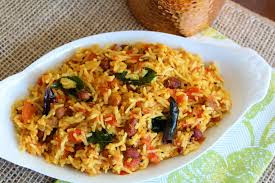We Bet You Didn’t Know These 6 Interesting Facts About Basmati Rice
Basmati Rice – The Slender King
Basmati rice is exponentially grown in India and bears a strong, long, slender, and aromatic character based on its appearance and taste. It is widely used in almost every Indian household and is paired with Indian curries, pilafs, biryanis, desserts, starters, and much more.
While the best basmati is the one that doubles up on cooking, has the most aromatic scent, tastes naturally sweet, and looks appealing; there are several hidden mysteries about this culinary gem.
The Indian grocery scenario is heaped with some of the most amazing basmati rice brands but the best rice brand that I personally recommend and is sworn by expert chefs is Daawat Basmati Rice. Its long and slender rice grains are non-sticky, double up their size on cooking, and bear a strong and aromatic flavour that just feels divine on the tastebuds.
Here are some of the lesser-known facts about basmati rice that you must know if you’re a big basmati rice buff:
The unique aroma of basmati rice can be attributed to a cocktail of 100 separate compounds consisting of hydrocarbons, alcohols, aldehydes and esters. While all these together make up the best basmati rice even more fragrant, 2-acetyl-1-pyrroline is the primary catalyst behind the devouring aroma.

The term ‘basmati’ has been coined after its derivation from the Sanskrit word ‘basamati’ which stands for ‘aroma/fragrance’ in the common language. Since Indian sub-continent is believed to be the primary cultivator of basmati rice, hence the name from Indian origin.
If you count the world’s overall rice cultivation, India’s share stands tall and proud at 70% of the total rice production in the world. India is the largest producer and exporter of basmati rice in the whole world.
The best basmati rice is believed to be the one that doubles up its original size on cooking. Though it gets double in the size, it’s not doubly fattening as opposed to the pre-conceived notion about the basmati rice.
Opposed to what the common perception is, basmati rice is touted to be great for diabetic people as it has low glycaemic index and keeps the person fuller for long. High amount of fiber, starchy carbs, protein, and amalyse in the rice accounts for its low glycaemic index which doesn’t increase the blood sugar levels.
Taking forward the huge popularity of basmati rice, US has now stepped inside the basmati rice production arena and came up with its own varieties like ‘Texmati’ and ‘Kasmati’. Though they’re believed to be good in flavour but not quite up to the original Indian basmati rice which is believed to be the best basmati.



Comments
Post a Comment